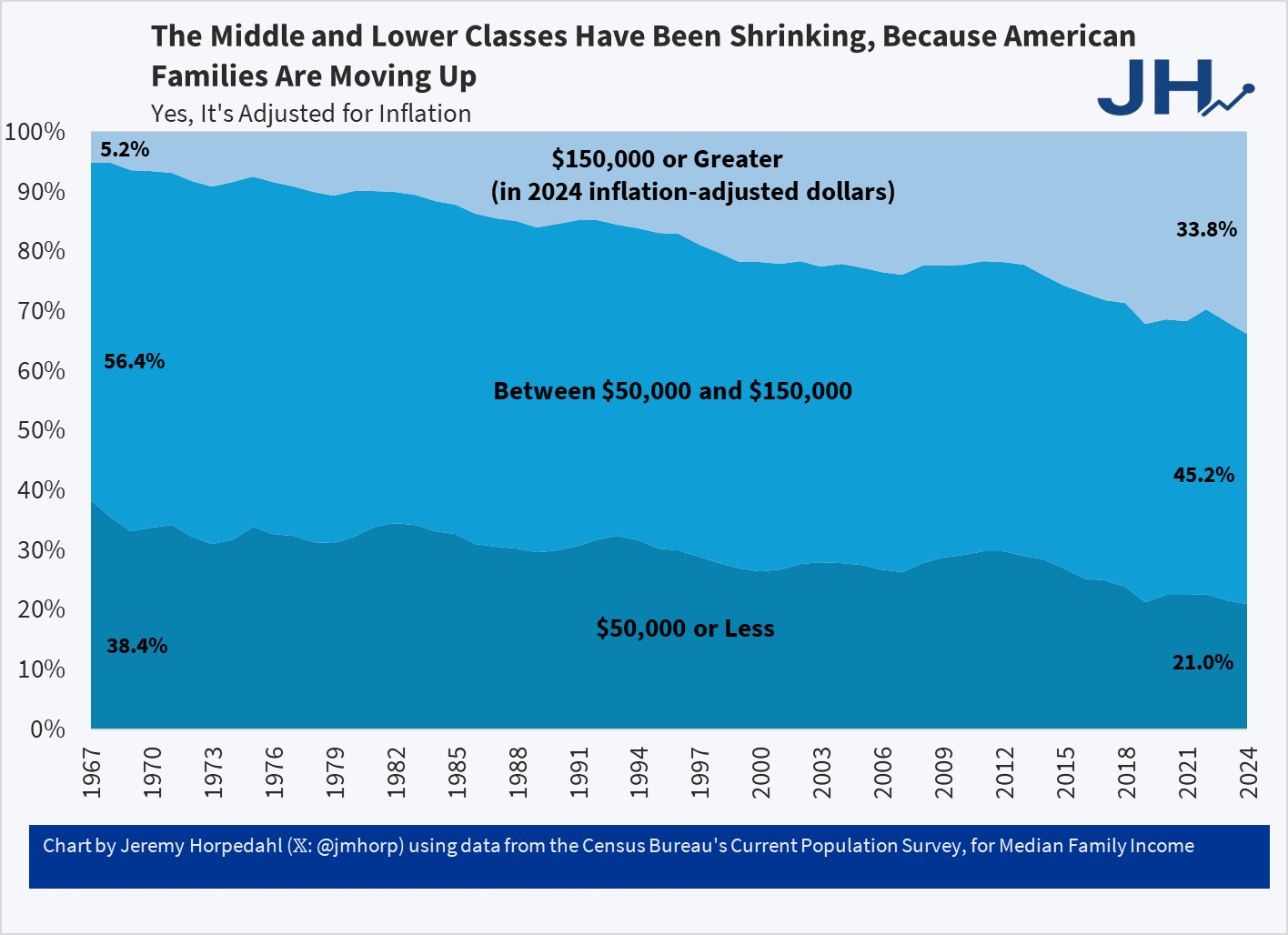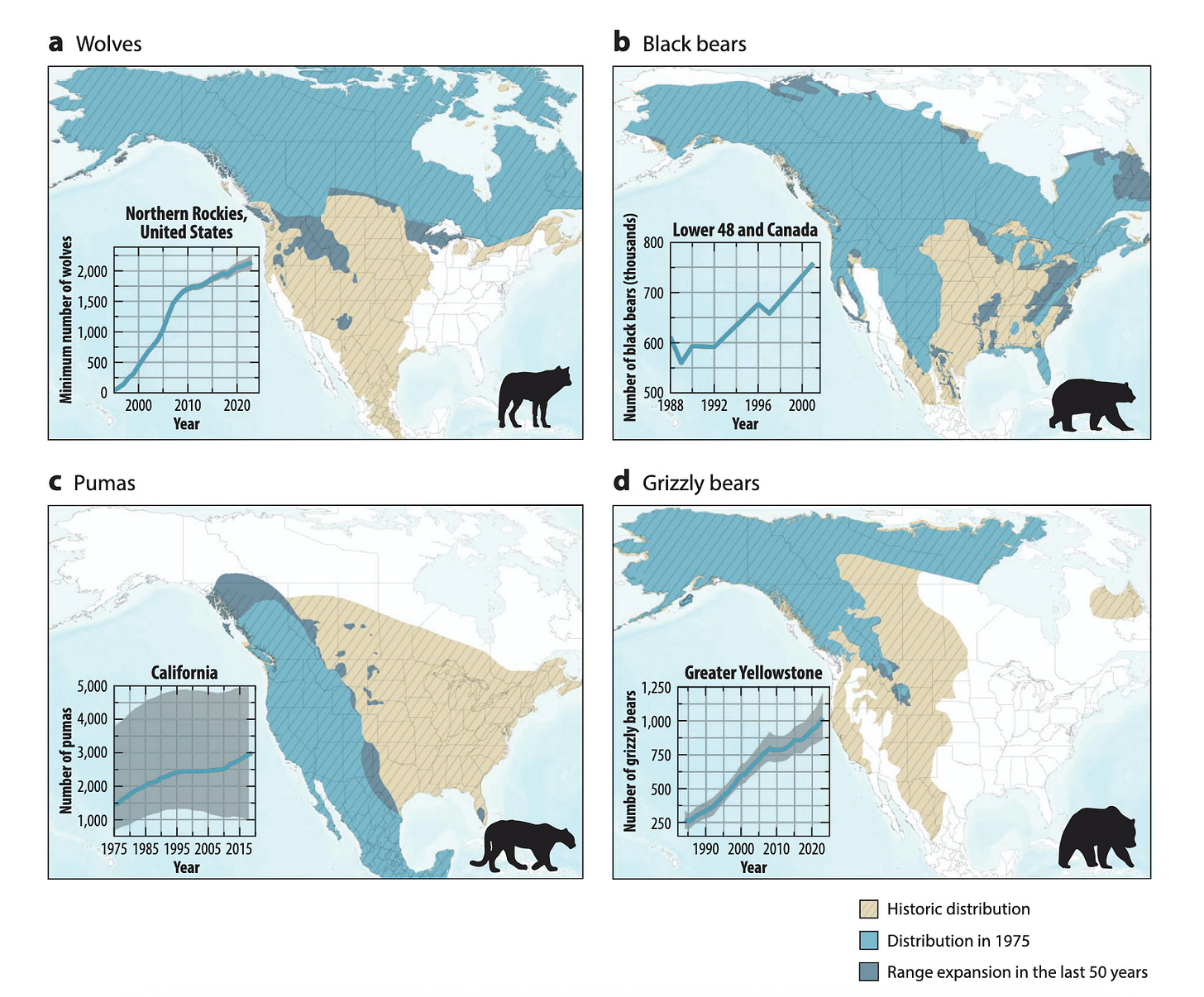Doomslayer: Progress Roundup
Coral reef resilience, a new malaria drug, Blue Origin catches a booster, and more.
Economics & Development
The US middle class is still shrinking… because we’re getting richer. According to data from the Current Population Survey, over a third of US households now earn more than $150,000 inflation-adjusted dollars per year, up from 5 percent in 1967.
There’s a common narrative that younger generations in the US have been left out to dry economically. The journalist Derek Thompson recently looked into this claim and, after giving the argument a fair consideration, finds that young Americans are actually richer than previous generations were at the same age. He also notes that while youth unemployment and home ownership rates are worrisome, they are not that far off the historic norm.
Energy & Environment
Conservation and biodiversity
North America’s big four terrestrial carnivores—gray wolves, pumas, black bears, and grizzly bears—have seen a strong recovery in recent decades. All four species have significantly expanded their population and range (see the figure below), though they remain far below historic levels.
Two recently published papers suggest coral reefs may be more resilient than previously assumed. One tracked reef recovery near Fiji after a category five tropical cyclone destroyed over half of the hard coral cover, and found that the reefs had recovered after just four years. The other examined nearly two centuries of Porites coral skeletons and found that, even as ocean chemistry has grown less favorable, these corals have adjusted their internal conditions to cope with acidifying seas and continue building their skeletons.
Energy and natural resources
India has doubled its total installed electricity capacity since 2014, from less than 250 gigawatts to over 500. Note that “total installed electricity capacity” reflects the theoretical maximum that all of India’s generators could produce, not their actual output.
Health & Demographics
There is a new malaria drug for the first time in 25 years: a combination therapy called GanLum, which cured more than 99 percent of cases in late-stage trials and could help counter rising resistance to older treatments like artemisinin.
Egypt has eliminated trachoma, an eye infection that can cause blindness, as a public health problem.
In an early human trial, a single infusion of a new CRISPR gene therapy cut “bad” LDL cholesterol and triglycerides. In four patients, at the highest dose, it reduced LDL by around 50 percent and triglycerides by about 55 percent after two weeks.
There’s another promising GLP-1 agonist correlation: Patients with colon cancer taking GLP-1 medications (Ozempic et al.) had a 5-year mortality rate of just 15.5 percent, compared with 37.1 percent in non-users. That’s from an observational study, so causation isn’t proven, but the researchers point to several possible mechanisms, including the drugs’ dampening of systemic inflammation.
Science & Technology
Blue Origin has become the second company in the world to successfully land an orbital-class rocket booster. That same launch also sent ESCAPADE, a NASA mission intended to measure the magnetic fields of Mars, into space.
Waymo’s robotaxis are now taking riders on freeways.
Violence & Coercion
Mexico’s government claims that the country’s murder rate has fallen 32 percent over the past year, though this may be an overestimate. According to The Economist, the true figure is 14 percent, and including manslaughter, femicide, and “disappearances” (when people simply go missing) brings that down to a 6 percent decline. Nonetheless, it’s encouraging progress.
India is also reporting falling crime. According to their National Crime Records Bureau, the violent crime rate dropped by 29 percent between 2014 and 2023.




